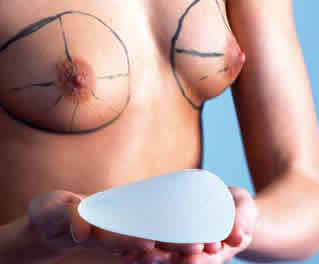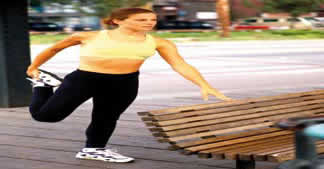As in previous editions, TRANSFORM magazine brings it readers the latest “in†diets, including an objective criticism of them. Today we present the one based on the book “Timing makes you Thin†by G. Clous, also known as “the 3 hour dietâ€.
The new diet called the “3 hour diet†or in other words “Timing makes you Thinâ€, by George Clous, assures us that it is not what we eat that makes us slim, but how often we eat. It promises a weight loss of 2 pounds a week without giving up your favourite food.
It’s true that in spite of the number of diet books, diet pills and TV programmes, there are more and more people with problems of excess weight. George Clous is emphatic in saying that diets do not work….he is not the first nor the last person to say so….and he adds that eliminating and going without your favourite food is not the solution.
At the beginning you lose weight, then there is a stage when the weight loss stabilizes, and afterwards all the weight is regained within a year, and this is what happens in 90% of the cases. According to him, the secret for losing weight and not regaining it is not to let more than 3 hours pass between each meal. Following this pattern, you should lose 2 pounds per week.
Why would it be necessary to eat every 3 hours?
The first answer would be because this cancels out the survival mechanism that protects us against hunger. Clous assures us that if we let more than 3 hours pass between two meals, this survival mechanism, known as the Starvation Protection Mechanism or SP M, is activated, making the body accumulate fat and burn muscle to conserve body fat, and thus help us to survive in the event of a food shortage. At the same time as this process takes place, the metabolism is also reduced, which is a problem in itself when you are trying to lose weight, and this is when the SP M comes into action and the body uses the muscles rather than fat to obtain energy.
This is not advisable because muscle controls the basic metabolism, i.e. how many calories are being burned when you sit or sleep. In a state of repose, each pound of muscle burns approximately 50 calories. Which means that if you lose 5 pounds of muscle, your metabolism will burn 250 calories less each day.
This diet raises the level of basic metabolism.
If the calories are better distributed throughout the course of the day, the supply of energy to the body is more regular. This enables the cells to obtain sugar more quickly from the blood and to make it available immediately for converting to energy. If the meals are more spaced and you take in more calories in each meal, the body cannot burn them, therefore it stores them as fat. The result is that you gain weight, even if your calorie intake is the same for the whole day.
This diet improves the energy level.
If you sometimes you ask yourself why you feel so tired at the end of the day, it is because you have been too long without food. The sugar level is reduced and you notice that you can no longer think clearly, and you feel like sleeping a siesta. If you eat every three hours, the sugar level of the blood remains stable and therefore provides a flow of amino acids (and sugar) to supply the muscles and the brain tissue. This also enables your energy and moods to be more regulated, because you are receiving a continuous energy supply throughout the day.
This kind of diet naturally curbs the appetite.
If you provide your body with food every three hours, you are maintaining a stable sugar level, which automatically shrinks your appetite. Research has shown that people who eat more frequently do not feel hungry, nor feel the need to eat.
Eating every 3 hours reduces your cholesterol level
Eating every 3 hours helps to regulate your cholesterol level. A report published in the British Medical Journal indicates that the cholesterol level of people who eat 6 or more times a day is around 5% lower than people who eat less frequently.
eatin every 3 hours reduces your cortisol level.
A high level of the cortisol hormone is associated with abdominal fat. Research has demonstrated that people who eat smaller meals and more often, as compared to those who eat three large meals a day with the same number of calories, could reduce their cortisol level by 17% in two weeks
should I eat?
Meal-times are calculated from when you wake up in the morning. – Rule 1. Have breakfast within one hour of waking up, to get the metabolism going. – Rule 2. Eat every three hours. – Rule 3. Have your last meal at least 3 hours before going to bed so the food is digested before
The key is to eat 5 times a day plus, if you wish, a small, 50-calorie snack, at 3 hour intervals. For example, breakfast at seven, a snack at ten, lunch at one, tea at four and finally dinner at seven. This would be the perfect distribution of eating times.
What should I eat?
In this diet you eat 3 meals, 2 snacks and one good meal per day. The author, George Clous, recommends several diets, or you can follow the one you like best, providing that you have an intake of around 1,450 calories per day, this being the ideal amount for shedding 2 pounds of fat per week.
But never less than this number of calories so that the body does not compensate by lowering the basic metabolism level. The diet must be balanced, providing the right amount of carbohydrates, proteins and fats needed to maintain normal levels of sugar and insulin in the blood.
The 3 hour diet could be planned for breakfast, lunch and dinner as follows : According to the author, half of the plate should contain vegetable (fruit is recommended for breakfast), the other half of the plate is divided into two equal parts, one for carbohydrates and the other for protein. You can also add a spoonful of oil to help regulate the appetite. If you are still hungry afterwards, you can add another half plate of vegetable.
My opinion :
This diet, like the Atkins or The Zone diet, is planned around what people eat. You could say it is like advising someone on the type and quantity of petrol they should use for their car without taking into account what type of car it is. Obviously you would not use the same quantity or the same category of petrol for a diesel engine, a normal engine or a Formula One engine.
The diet is not everything….for this reason there is so much failure in this field. The diet should be adapted to each individual, not just in the amount of calories, but also the type of food, and taking into account not only the everyday life-style, but also any momentary changes in life-style. each person’s metabolism is different, and a doctor should not recommend the Atkins diet, The zone, the south beach or the 3 hour diet with the guarantee of personalizing it for each patient. Generally speaking i am not in favour of diets that oblige people to organize their life around food. quite the contrary, i think food, and therefore diet, should be adapted to our life-style. i am sure that eating every three hours could be effective for some people, but on a practical level it is not very realistic, and another kind of diet could be equally as effective. Like any plastic surgeon, every day i see patients who, after having tried as many as 10 different diets and even more “miracle†products to try and lose weight, with only temporary success, in the end decide to undergo a liposuction, which is usually the best solution.
View PDF
—————————————————————————-
Editorial: Dr. Pier Albrecht, Dr. Pierre Albrecht, Dr. Pierjean Albrecht,
Dr. Pier Jean Albrecht, Dr. Pierre F. Albrecht, Dr. Pierre Frank Albrecht,
Dr. P. Frank Albrecht, Dr. Pierjean Frank Albrecht, Marbella Clinic






